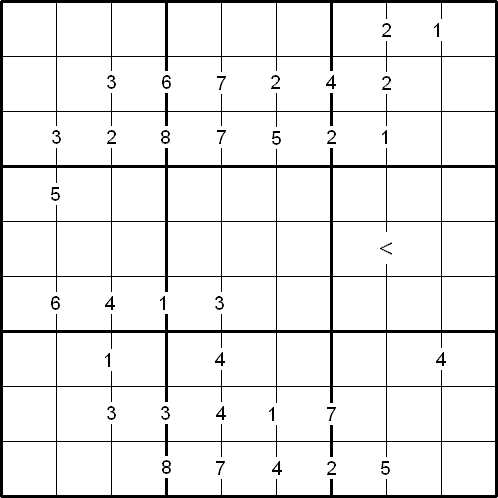Copyright © University of Cambridge. All rights reserved.
'Difference Sudoku' printed from https://nrich.maths.org/
Show menu
Difference Sudoku printable worksheet
By Henry Kwok

Rules of Difference Sudoku
Like the standard Sudoku, the object of the puzzle is to fill the whole $9 \times 9$ grid with numbers from $1$ to $9$, so that each row, each column, and each of the nine $3 \times 3$ squares contain all nine digits.
There are special clue-numbers placed on the border lines between selected pairs of adjacent squares of the grid. Each clue-number is the difference between the two numbers in the adjacent squares.
For example, a clue-number $7$ on the border line between two adjacent squares means that the possible pairs of numbers for the squares on either side must be one of the following combinations: $1$ and $8$, $8$ and $1$, $2$ and $9$, or $9$ and $2$.
The inequality sign indicates that the number in row 5 column 7 is smaller than the number in row 5 column 8.
As this variant has only one inequality sign on the border line, it is called Minimal Difference Sudoku.